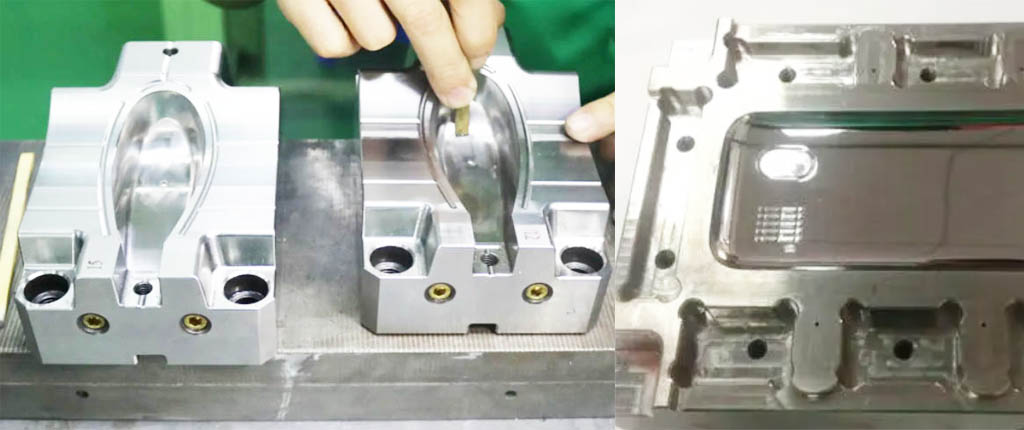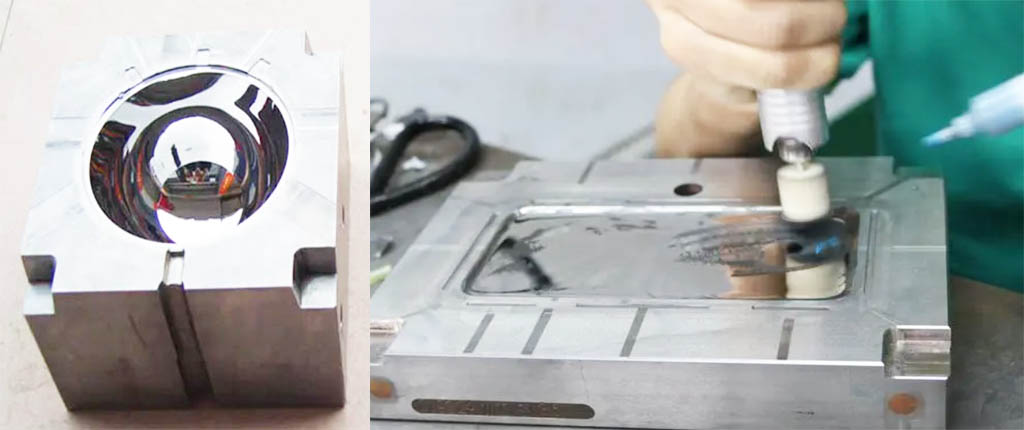Mold polishing is a critical step in the manufacturing process plastic injection molding mold and composites compression molding mould , as it directly impacts the quality and functionality of the final product. Different types of molds require varying polishing techniques to achieve the desired results. In this article, we will explore the key considerations for mold polishing across different techniques.
The polishing of different types of molds requires different things to pay attention to. Let’s take a look
Table of Contents
ToggleKey attention in different mould polishing
1. Attention in mold sandpaper grinding and oil stone grinding
(1) For the surface of the mold with higher hardness, only clean and soft whetstone can be used to polish the tool.
(2) When changing the sand number level during grinding, the workpiece and the operator’s hands must be cleaned to avoid bringing coarse sand to the next level of finer grinding operations.
(3) During each grinding process, the sandpaper should be ground from different 45° directions until the sand grain of the previous level is eliminated. When the sand grain of the previous level is removed, the grinding time must be extended by 25%, and then Only then can the next finer sand number be converted.
(4) Changing different directions during grinding can avoid unevenness such as waves on the workpiece.
2. Attention in diamond grinding and polishing
Diamond grinding and polishing must be carried out with as little pressure as possible, especially when polishing prehardened steel and polishing with fine abrasive pastes. When polishing with 8 000# abrasive paste, the common load is 100-200g/cm2, but it is difficult to maintain the accuracy of this load. To make this easy, make a thin, narrow handle on the wooden strip, or cut a portion of the bamboo strip to make it softer. This will help to control the polishing pressure and ensure that the mold surface pressure is not high. When using diamond grinding and polishing, not only the work surface needs to be clean, but the hands of the worker must also be very clean.
3. Attention in plastic mold polishing
The polishing of plastic molds is very different from the surface polishing required in other industries. Strictly speaking, the polishing of plastic molds should be called mirror finishing. It not only has high requirements for polishing itself but also high standards for surface flatness, smoothness and geometric accuracy.
The standard of mirror polishing is divided into 4 grades:
A0=Ra0.008μm
A1=Ra0.016μm
A3=Ra0.032μm
A4=Ra0.063μm
Because it is difficult to precisely control the geometric accuracy of parts by electrolytic polishing, fluid polishing and other methods, and the surface quality of chemical polishing, ultrasonic polishing, magnetic polishing and other methods cannot meet the requirements, the mirror surface processing of precision molds is still based on mechanical polishing. host.


Matters needing attention in polishing are as follows:
(1) When a new mold cavity starts to be processed, the surface of the workpiece should be checked first, and the surface should be cleaned with kerosene, so that the oilstone surface will not stick to dirt and lose the cutting function.
(2) Grinding rough grains should be carried out in the order of difficulty first and then easy, especially for some difficult-to-grind dead corners, the deeper bottom should be ground first, and then the side and large plane.
(3) Some parts may have multiple pieces assembled together for polishing. First, the rough or fire patterns of a single workpiece should be ground separately, and then all the workpieces should be ground together until smooth.
(4) For workpieces with large plane or side plane, use whetstone to remove rough grains, and then use a straight steel sheet for light transmission inspection to check whether there is any unevenness or inversion. Difficulty in demolding or part strain.
(5) In order to prevent the mold workpiece from developing undercuts or some bonding surfaces that need to be protected, it can be pasted with a saw blade or on the edge with sandpaper, so that the ideal protection effect can be obtained.
(6) Pull the plane of the grinding mold back and forth, and the handle of the drag oil stone should be as flat as possible, and should not exceed 25°. Because the slope is too large, the force is rushing from top to bottom, which will easily lead to a lot of rough lines on the workpiece.
(7) If the plane of the workpiece is polished with a copper sheet or a bamboo sheet pressed against sandpaper, the sandpaper should not be larger than the tool area, otherwise it will grind to the place that should not be ground.
(8) Try not to use the grinding machine to repair the parting surface, because the parting surface trimmed by the grinding wheel head is relatively rough and has uneven waves. If necessary, the grinding wheel head must be glued to the balance of concentricity.
(9) The shape of the grinding tool should be close to the surface shape of the mold, so as to ensure that the workpiece is not ground and deformed.


